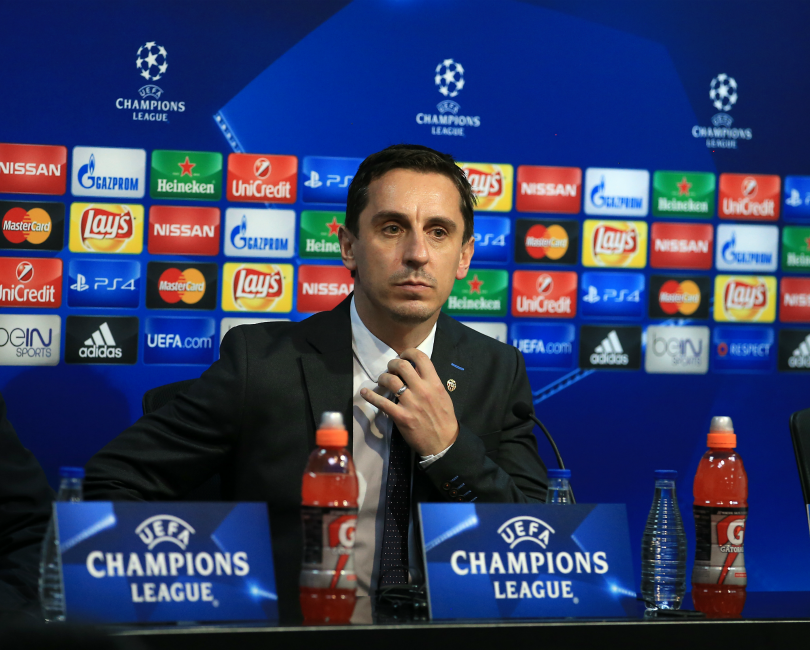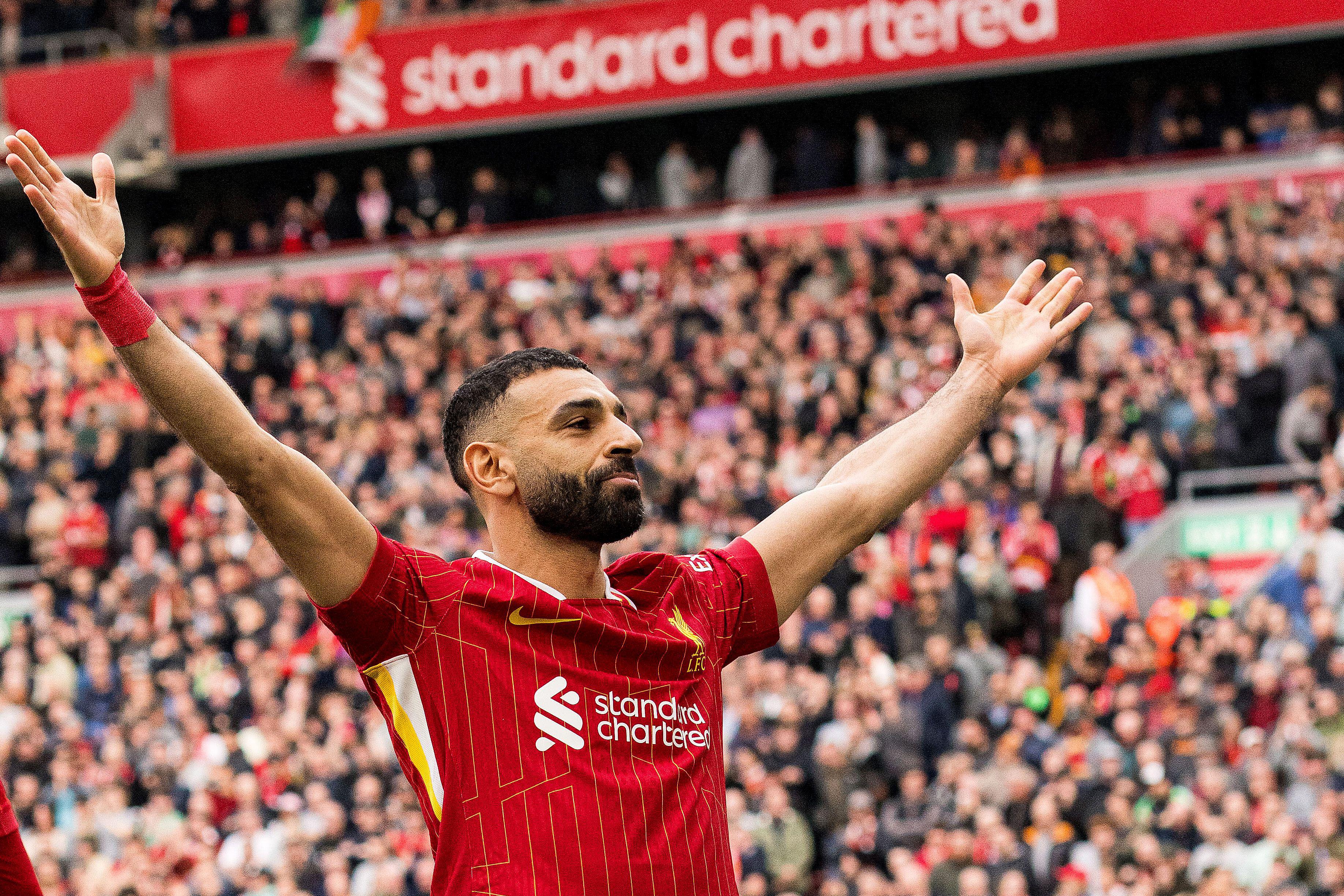5 early characteristics of Gary Neville's coaching style
Lee Roden analyses the philosophies that the former Manchester United captain is trying to impart on Valencia...
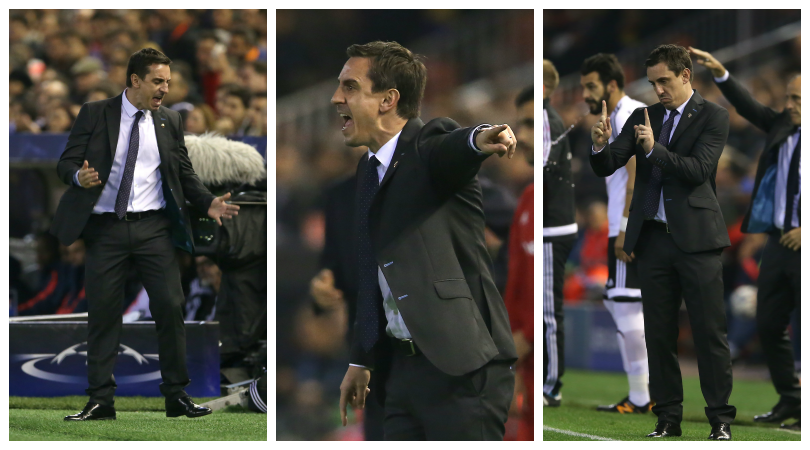
On December 2, Valencia completed one of the most shocking managerial appointments ever when they named Gary Neville as their new boss. After years as a highly successful player then pundit in England, the surprise move to Spain has created a huge deal of intrigue. So just what kind of coach is he becoming? Here are five things we have learned already.
1. Building from the back
An early obsession of Neville’s at Valencia has been achieving a clean build-up from the back
An early obsession of Neville’s at Valencia has been achieving a clean build-up from the back, with his team looking to play out from the goalkeeper, on the ground, rather than hitting it long and relying on aerial 50-50s.
That was evident from day one. In his first game in charge against Lyon, the new boss opted to use Dani Parejo as the deep midfield pivot in a 4-3-3, rather than playing the Spaniard in a more advanced role as previous coaches have. Many of Parejo’s characteristics fit the pivot’s role well: he is good at creating a sound passing angle, and he gets the ball out of his feet well, turning sharply. A decent range of passing means the Spaniard can also vary the direction of the build-up.
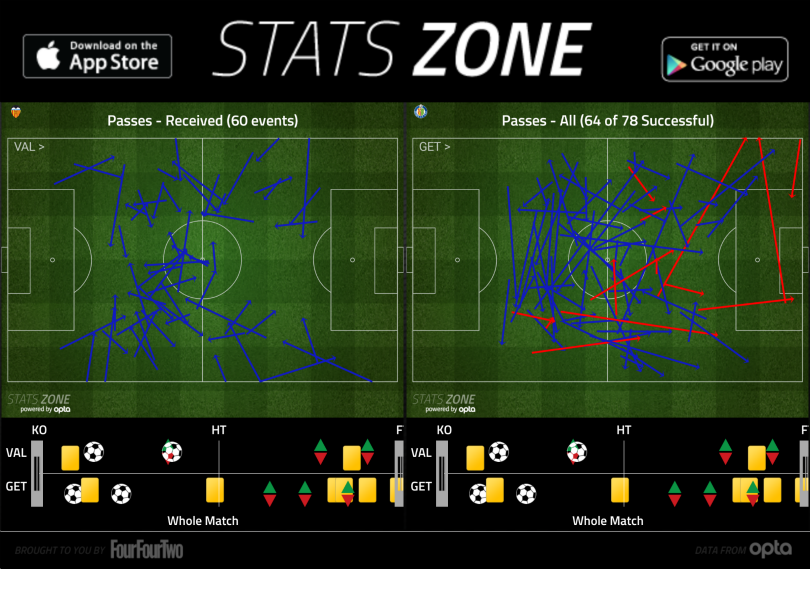
Dani Parejo’s distribution v Getafe on December 19
There have been hiccups though. Neville’s insistence on passing the ball out from the keeper means the centre-backs need to be consistent and accurate in their distribution, and so far that hasn’t been the case. Against Getafe in La Liga, Aymen Abdennour committed a number of errors when trying to weight his passes. One such instance resulted in him giving the ball away to the Madrid side in his own defensive third, and in the space of one pass, Getafe scored.
Another problem is that while Parejo is good technically, he isn’t the most robust midfielder. Neville attempted to counter that in the Copa del Rey against Barakaldo by switching from a 4-3-3 to a 4-2-3-1, with academy holding midfielder Wilfried Zahibo joining Parejo in a deep midfield two for added protection. The experiment worked well, so Neville may be tempted to revive the double pivot in the future.
Get FourFourTwo Newsletter
The best features, fun and footballing quizzes, straight to your inbox every week.
2. Sharp transitions
In those games his team were so obsessed with breaking quickly that they rushed their final ball, resulting in the opposition regaining possession
Neville has spoken openly about his love for teams that make use of sharp transitions from defence to attack, citing Jürgen Klopp’s Borussia Dortmund and Jupp Heynckes’ Bayern Munich as examples, and we are already seeing the influence in action. The attraction of playing that way is simple: opponents are most likely to have players out of position when they have allowed an attack of their own to break down, so if the ball can be used accurately at that moment, the route to goal should be clearer.
When it works, this method of attack is spectacular. In Neville’s first cup game at Valencia against Barakaldo, the opening goal came when his team won the ball in the opponent’s half, then in the space of three sharp passes, forced a save which Santi Mina followed up on to score. Another three-pass move following an interception created the second.
Barakaldo are a third division side, however, and stronger rivals generally make it harder to complete fast transitions. That has been the case in both of Neville’s first two La Liga matches, against Eibar then Getafe respectively. In those games his team were so obsessed with breaking quickly that they rushed their final ball, resulting in the opposition regaining possession. If they are going to win at the highest level, Valencia can’t always try to force the direct option. Spells of patience will be needed too. Neville has struggled to find that balance in his first few weeks.
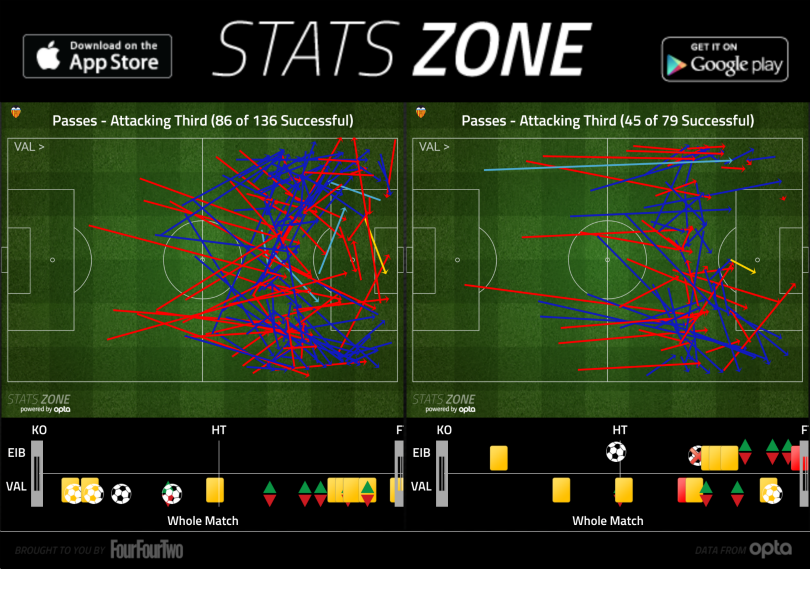
Valencia’s play in the final third against Eibar (Dec 13, left) and Getafe (Dec 19, right)
3. Defending high
Valencia aren’t pressing anywhere near accurately enough, and if their coach wants them to have success this season, he will need to fix that deficiency quickly
In his first interview as Valencia boss, Neville explained that he wants his teams to “pressurise and win the ball as high up the pitch as possible”. Putting that into practice has been a big challenge for the Englishman.
In Neville’s first game at the Mestalla against Lyon, los Che frequently suffered from the disorganised manner of their pressing. One player would push up in an attempt to win the ball, but others wouldn’t follow in succession, making it easier for Lyon to create numerical superiority after passing their way around the solitary assailant.
Since then, Valencia’s pressing has yet to improve significantly. Both Getafe and Eibar found it easy to escape from attempts to win the ball back, and even lowly Barakaldo forced two saves from Mat Ryan in the opening 12 minutes of their Copa del Rey clash, so simple was the route to goal. Valencia aren’t pressing anywhere near accurately enough, and if their coach wants them to have success this season, he will need to fix that deficiency quickly.
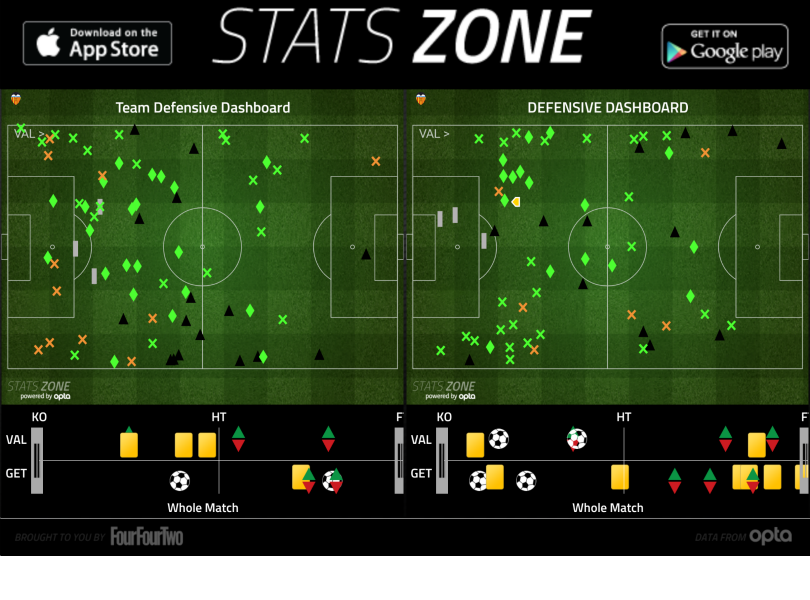
Valencia's defending in Neville’s first match against Lyon (Dec 9, left) and most recent vs Getafe (Dec 19, right)
4. Wide players to be key
One of the early positives of Neville’s foray into coaching has been his use of wide players, and he has shown a willingness to experiment in order to unlock their potential. One example is moving right-back João Cancelo further forward to the right wing, and after a shaky first game playing there, in the attacker’s second he produced a masterclass of wing play on both flanks. Against Getafe, Cancelo varied his attacks between hugging the touchline and making quick runs behind the opposition back four, helping to stretch the game both horizontally and vertically and creating space for other players. His final ball will also have pleased Neville, with a cross from deep creating Valencia’s first goal, and an expertly weighted through ball on the other side playing a huge part in their second.
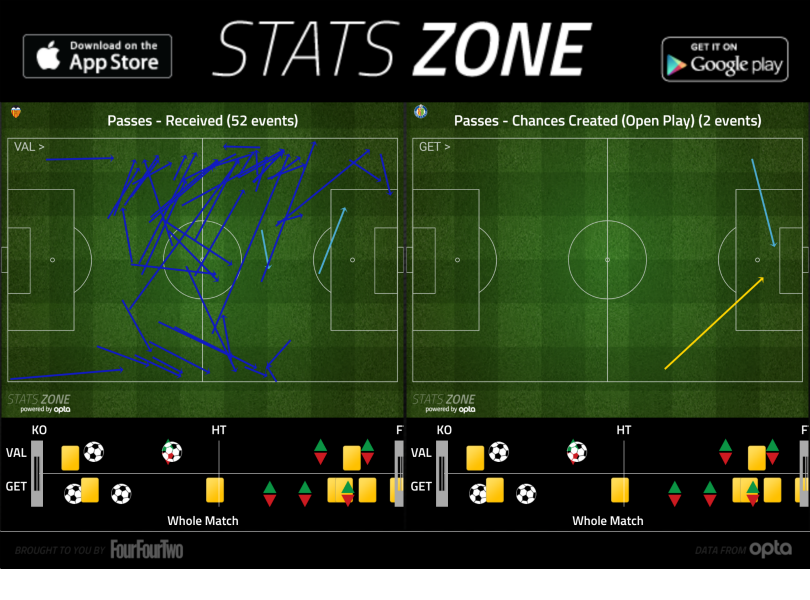
Joao Cancelo’s performance on the wing vs Getafe (Dec 19)
Along with Cancelo, Santi Mina has also impressed out wide, scoring twice in three games played under Neville, and showing smart movement in the final third to provide a regular option for Dani Parejo to switch play from deep. No doubt taking inspiration from his time at Manchester United, it looks like wingers will be key to Neville’s approach as a coach.
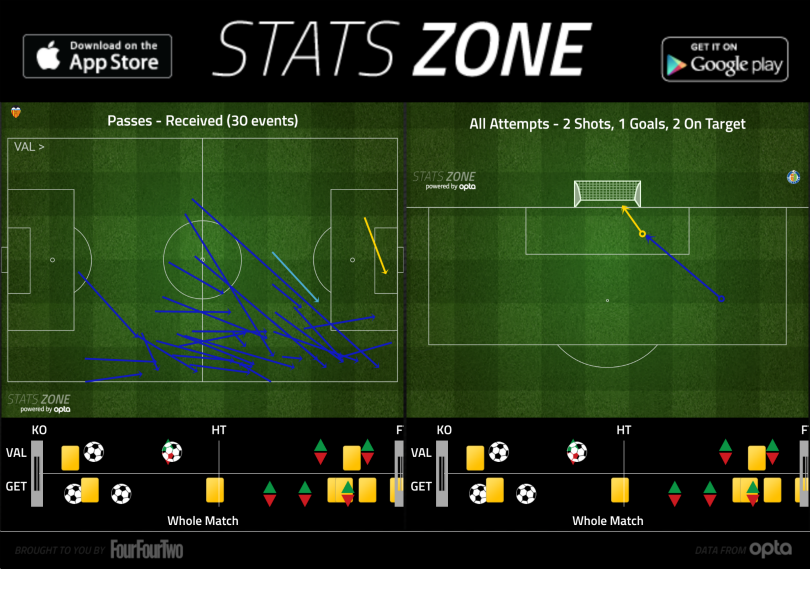
Santi Mina’s performance on the wing v Getafe (Dec 19)
5. Faith in youth
Perhaps unsurprisingly given his formation under Sir Alex Ferguson, Neville has opted for faith in youth as a solution to squad deficiencies at Valencia. So far he has made use of three academy players: midfielder Wilfried Zahibo made his debut against Barakaldo and was trusted to play the whole 90 minutes, while both playmaker Fran Villalba and defender Ibrahim Diallo also made appearances in the second half. The manager has stated that he will ask the three youngsters to continue with the first team in the next few weeks, Zahibo and Villalba having already making it to the bench in La Liga against Getafe. With former U19 coach Miguel Ángel Angulo as one of his assistants, Neville has invaluable insight into the academy, and it looks like he will use that resource. Fergie would no doubt approve.
